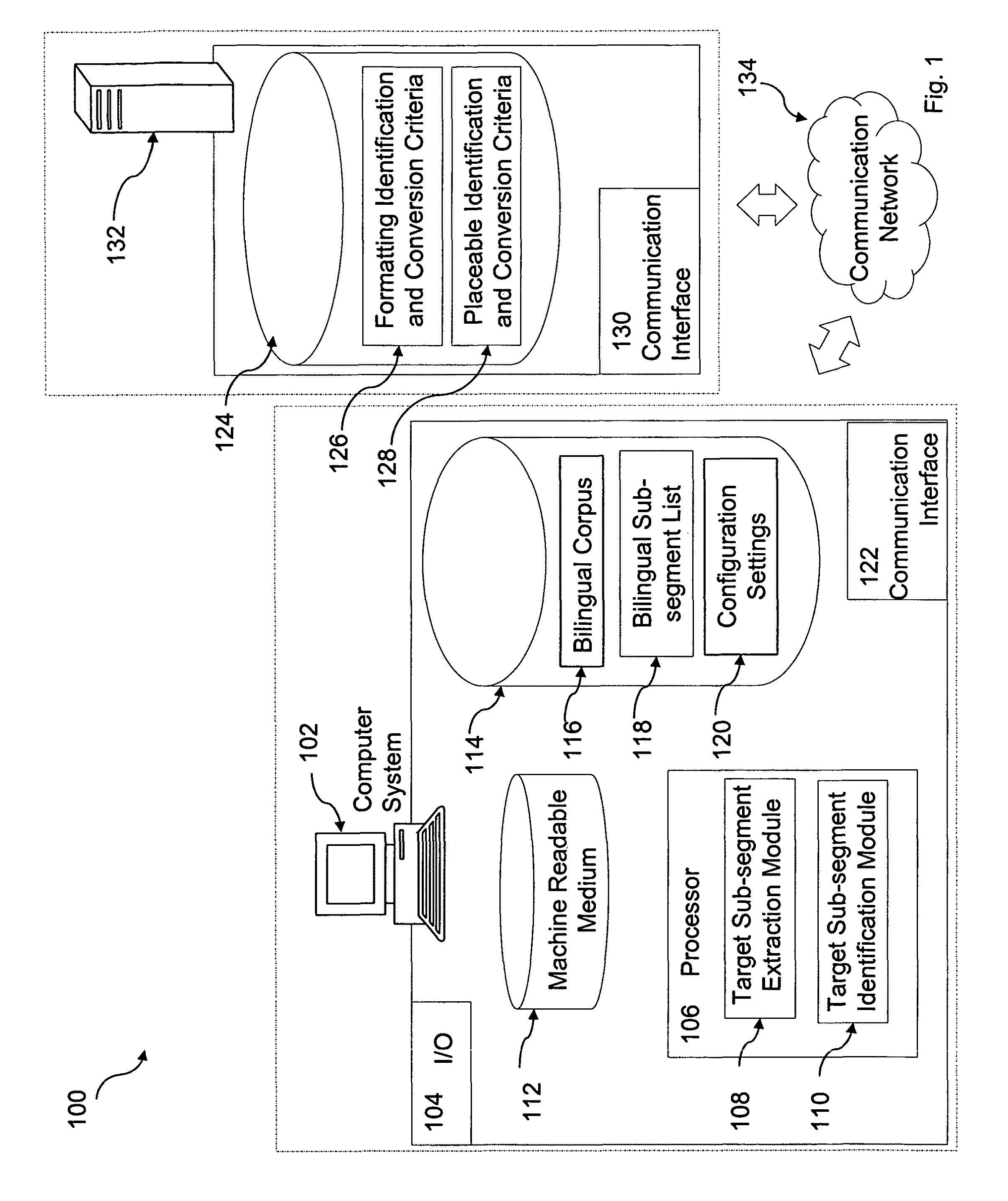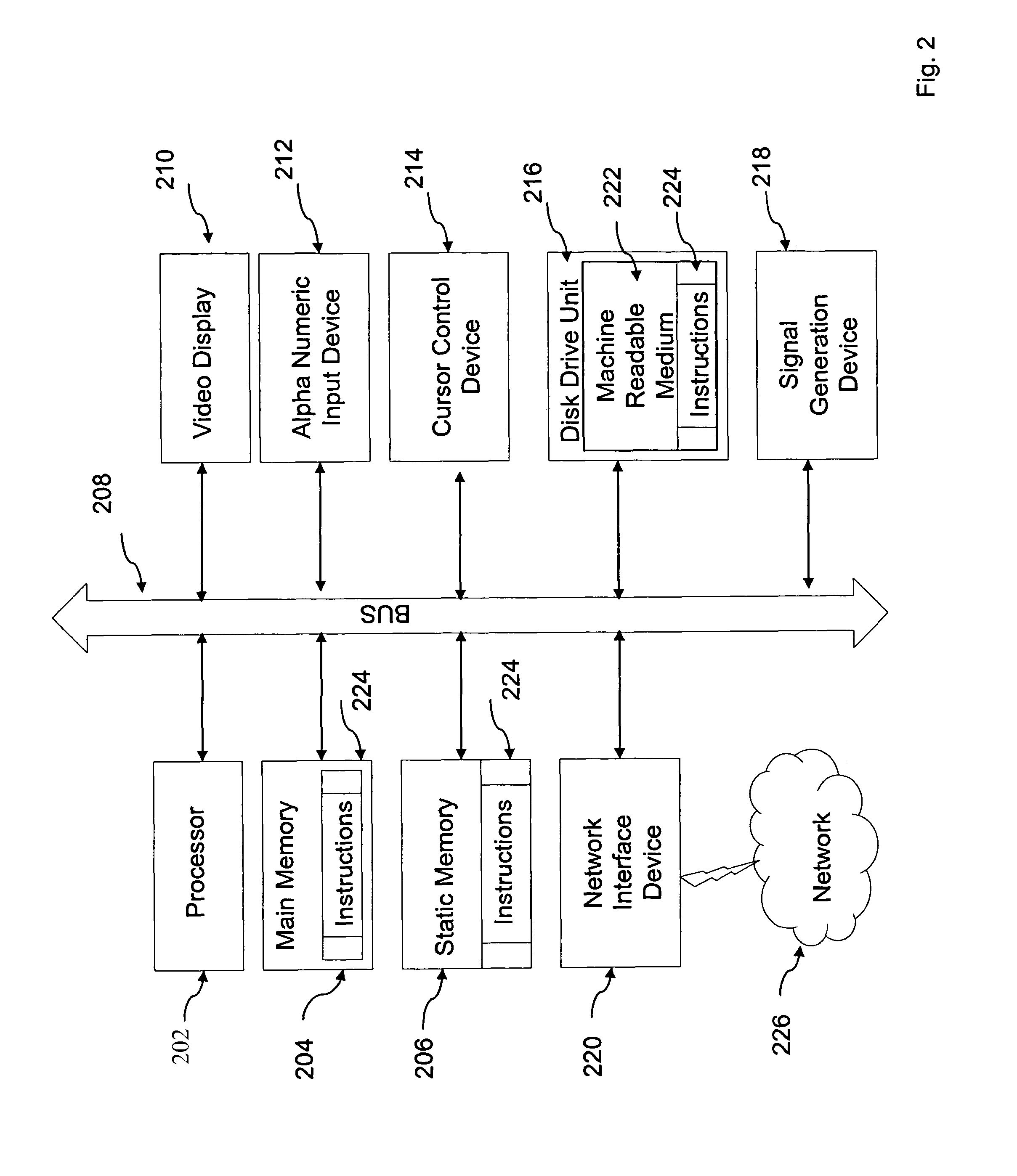Computer-assisted natural language translation
a natural language and computer technology, applied in computing, instruments, electric digital data processing, etc., can solve the problems of limited re-use, large human effort required in creating and maintaining such term bases, and inability to translate quickly, etc., to achieve less noise, less time, and translation speed. the effect of speed
- Summary
- Abstract
- Description
- Claims
- Application Information
AI Technical Summary
Benefits of technology
Problems solved by technology
Method used
Image
Examples
Embodiment Construction
[0049]In the accompanying figures, various parts are shown in more than one figure; for clarity, the reference numeral initially assigned to a part, item or step is used to refer to the same part, item or step in subsequent figures.
[0050]In the following description, the term “previously translated text segment pair” refers to a source text segment in a source natural language and its corresponding translated segment in a target natural language. The previously translated text segment pair may form part of a bilingual corpus such as a translation memory located in an electronic database or memory store. The term “target segment” is to be understood to comprise an amount of text in the target natural language, for example a sentence or paragraph. The term “target sub-segment” is to be understood to comprise a smaller excerpt of a segment in the target natural language, for example a word, fragment of a sentence, or phrase, as opposed to a full sentence or paragraph.
[0051]FIG. 1 is a ...
PUM
 Login to View More
Login to View More Abstract
Description
Claims
Application Information
 Login to View More
Login to View More - R&D
- Intellectual Property
- Life Sciences
- Materials
- Tech Scout
- Unparalleled Data Quality
- Higher Quality Content
- 60% Fewer Hallucinations
Browse by: Latest US Patents, China's latest patents, Technical Efficacy Thesaurus, Application Domain, Technology Topic, Popular Technical Reports.
© 2025 PatSnap. All rights reserved.Legal|Privacy policy|Modern Slavery Act Transparency Statement|Sitemap|About US| Contact US: help@patsnap.com



